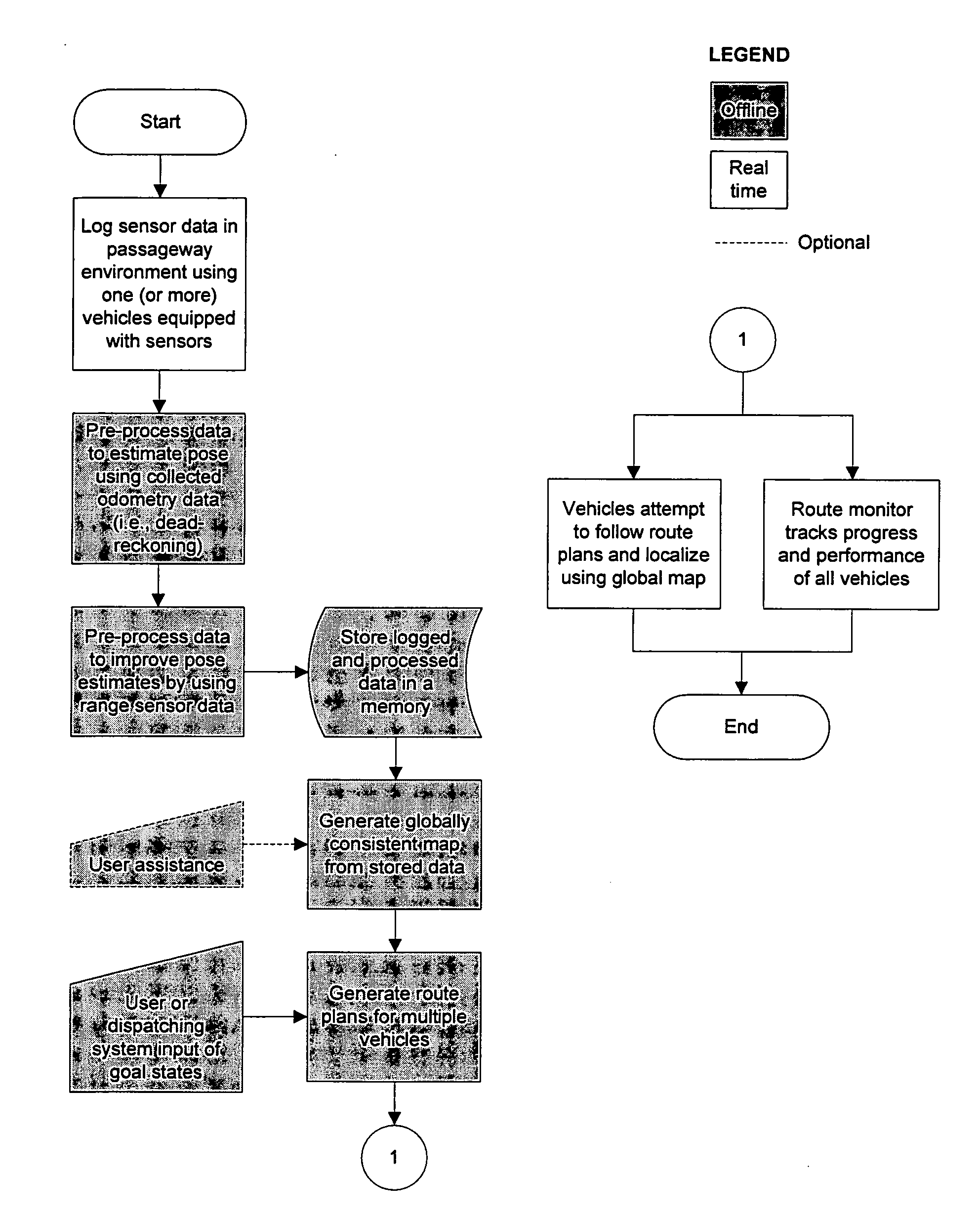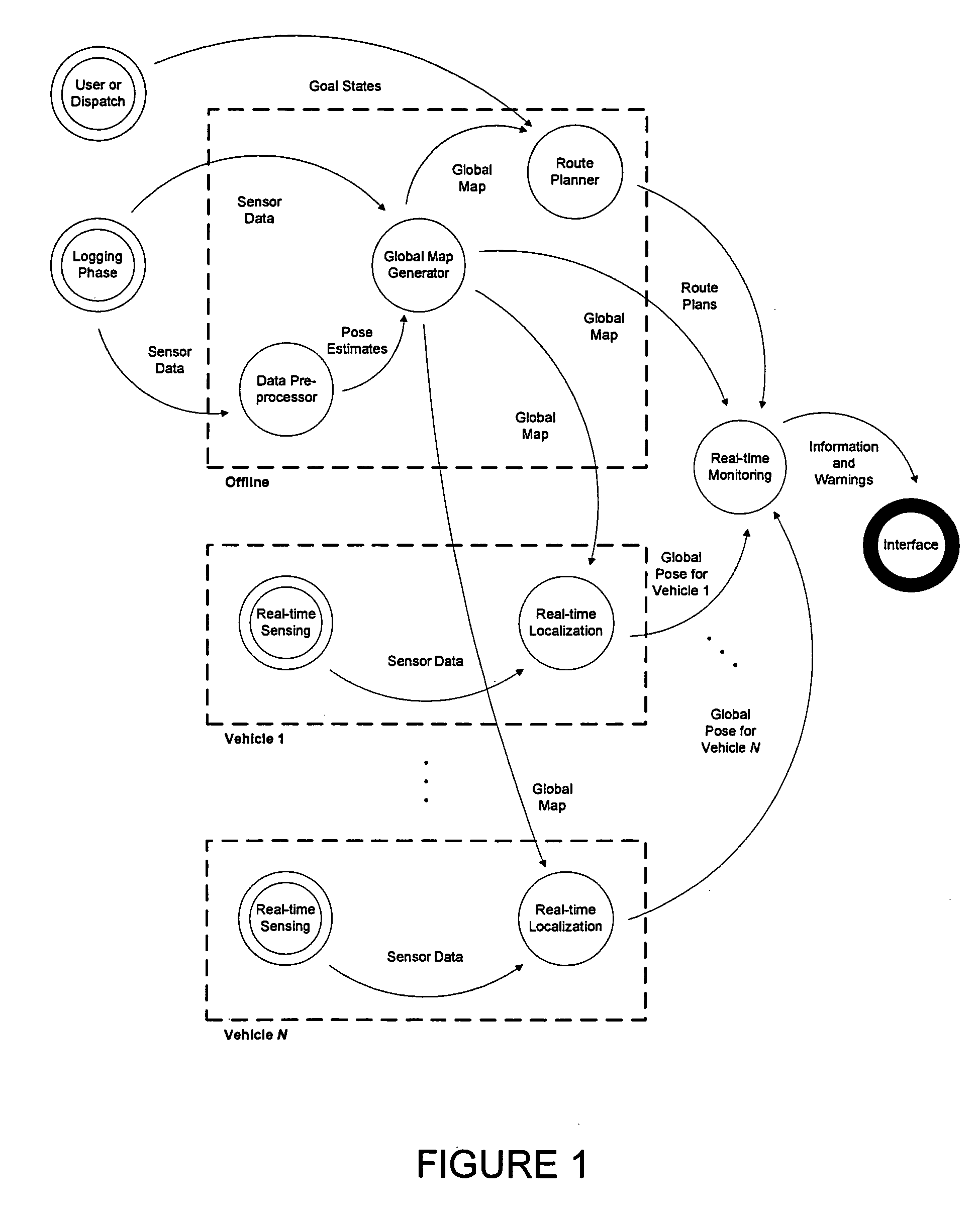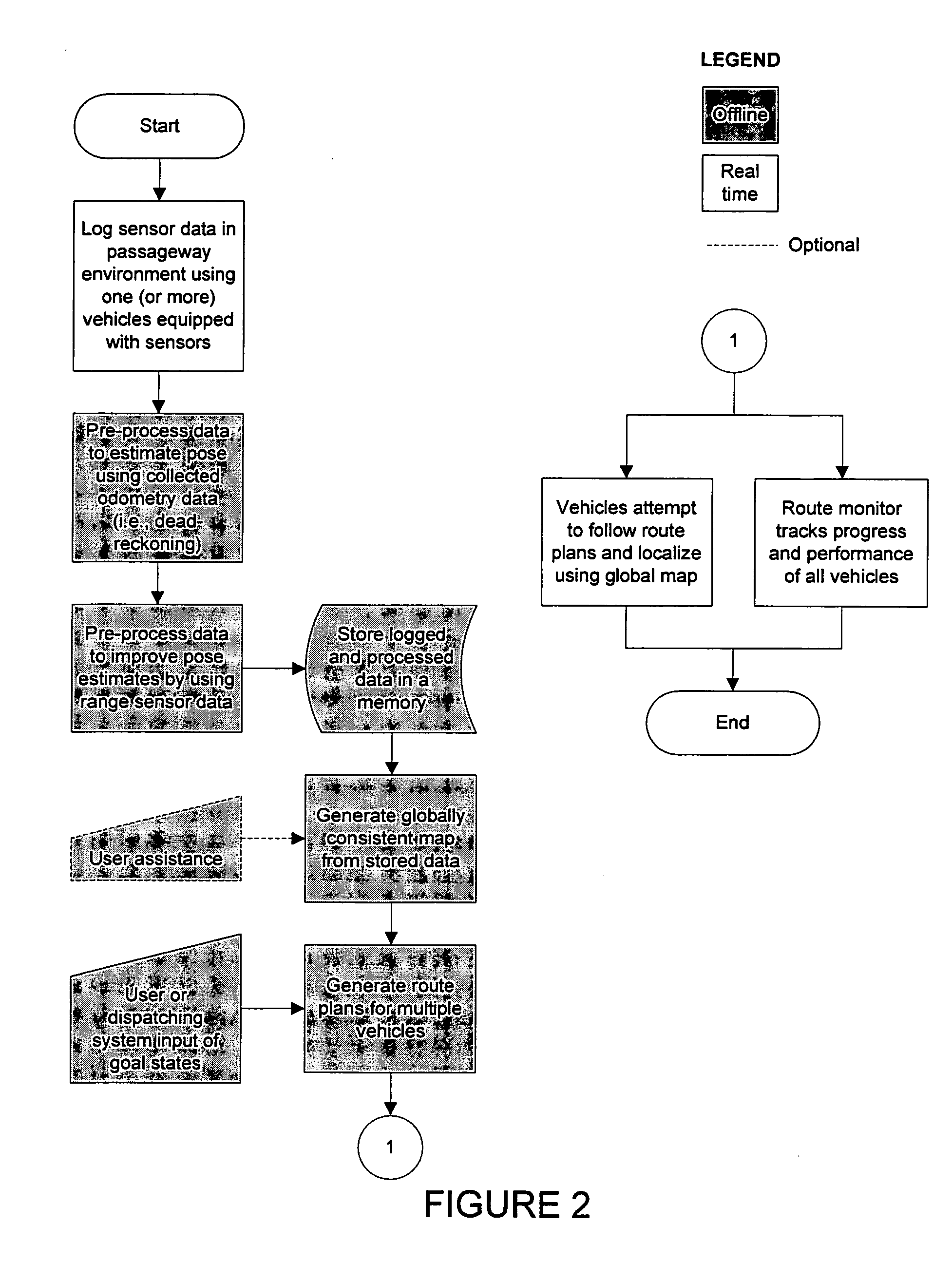Traffic management system for a passageway environment
a traffic management system and passageway technology, applied in the field of traffic management systems, can solve the problems of large errors, inability to apply automatic systems to underground mining operations, and inability to achieve real-time global positioning technology for underground passageways, and achieve the effect of minimizing a desirable cost metri
- Summary
- Abstract
- Description
- Claims
- Application Information
AI Technical Summary
Benefits of technology
Problems solved by technology
Method used
Image
Examples
Embodiment Construction
[0067] As used herein, a “map” refers to a representation of an environment and a “consistent map” refers to a map in which:
[0068] a) no two (or more) points on the map represent the same point in the physical environment;
[0069] b) no point in the map represents two (or more) points in the physical environment; and
[0070] c) if the map is a “metric map” (i.e., where the notion of distance between points is defined), then the distance between any two points in the environment is approximately correct (yet scaled) on the map.
[0071] As used herein, the phrases “local map” and “local sub-map” both mean a map of a particular region of an environment that is consistent in the region expressed by the map.
[0072] As used herein, the phrases “global map” and “globally consistent map” both mean a map of an environment that is consistent in the region expressed by the map, but which may have been created by combining one or more local maps. Thus, a local map is a global map in the region it...
PUM
 Login to View More
Login to View More Abstract
Description
Claims
Application Information
 Login to View More
Login to View More - R&D
- Intellectual Property
- Life Sciences
- Materials
- Tech Scout
- Unparalleled Data Quality
- Higher Quality Content
- 60% Fewer Hallucinations
Browse by: Latest US Patents, China's latest patents, Technical Efficacy Thesaurus, Application Domain, Technology Topic, Popular Technical Reports.
© 2025 PatSnap. All rights reserved.Legal|Privacy policy|Modern Slavery Act Transparency Statement|Sitemap|About US| Contact US: help@patsnap.com



